There are currently ten ‘Great Walks’ in Aotearoa New Zealand, these are multi-day hiking tracks that are meant to showcase the most diverse and spectacular scenery in the country. We have been steadily working our way through completing each of the tracks and planned to complete the last of the Great Walks on the South Island at Christmas; the Abel Tasman Coastal Track.

We had already walked the northern part of the track as a day hike (link), so decided to skip that section this time in order to simplify the logistics for this trip. We booked a water taxi to drop us on the beach at Totaranui, the most northerly point they go to, and where we had previously walked as part of our day hike.
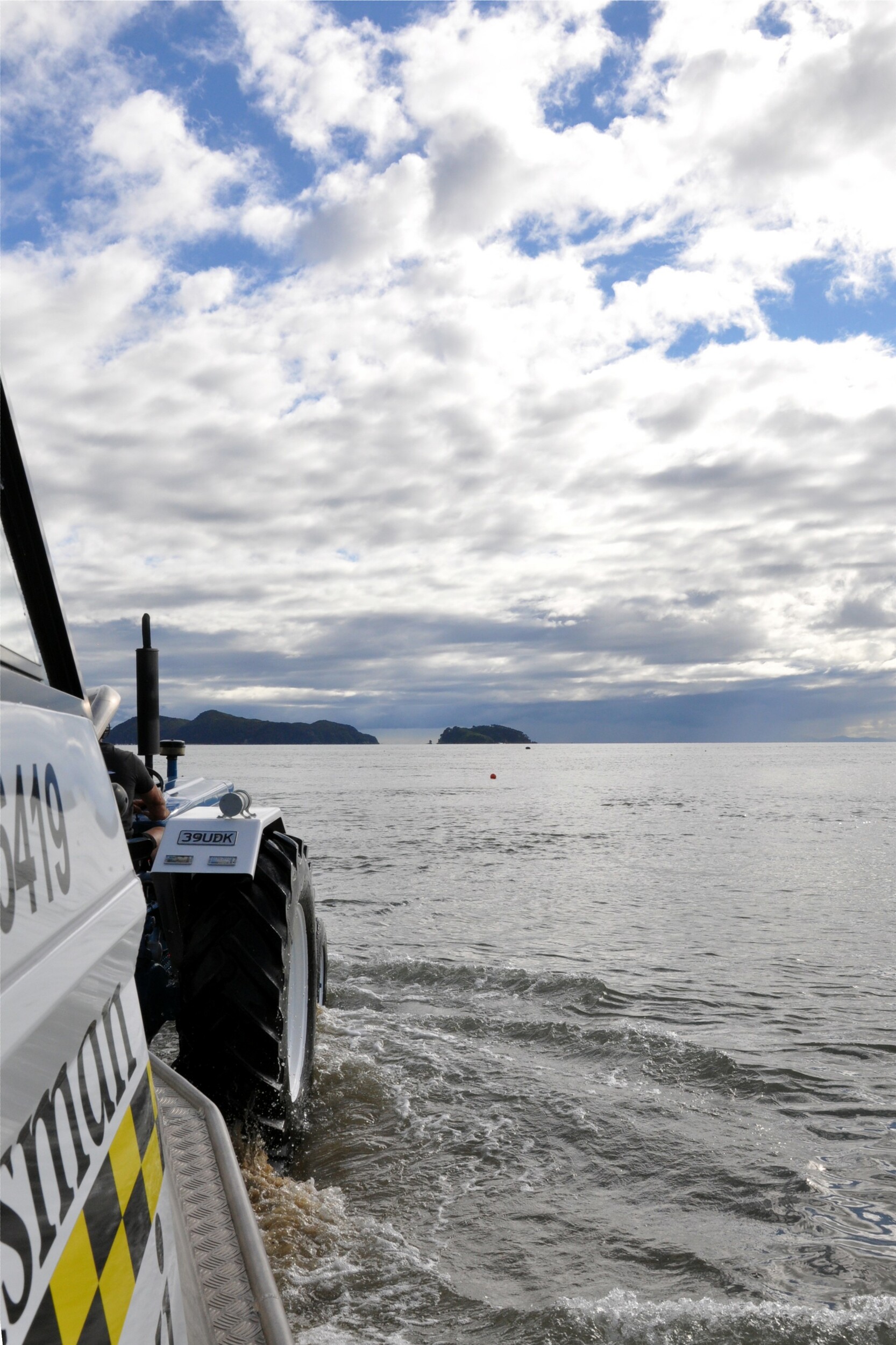
Unlike other water taxis we have used, we climbed aboard this one in the company’s car park before heading off down the street with the boat on a trailer being towed by a tractor. The tractor then took us out onto the shallow sandy flats from where the boat was launched.

After the initial excitement of the launch and navigating the shallow channel out into the bay, we got to do a bit of sightseeing along the coast. The first stop was split apple rock, a large rock that was likely split in two through the process of ‘ice wedging’ during an ice age (when water in cracks in the rock expanded causing it to fracture). Māori legend tells how the boulder was split in half when two feuding gods were fighting to possess it and used their strength to split the rock in half.
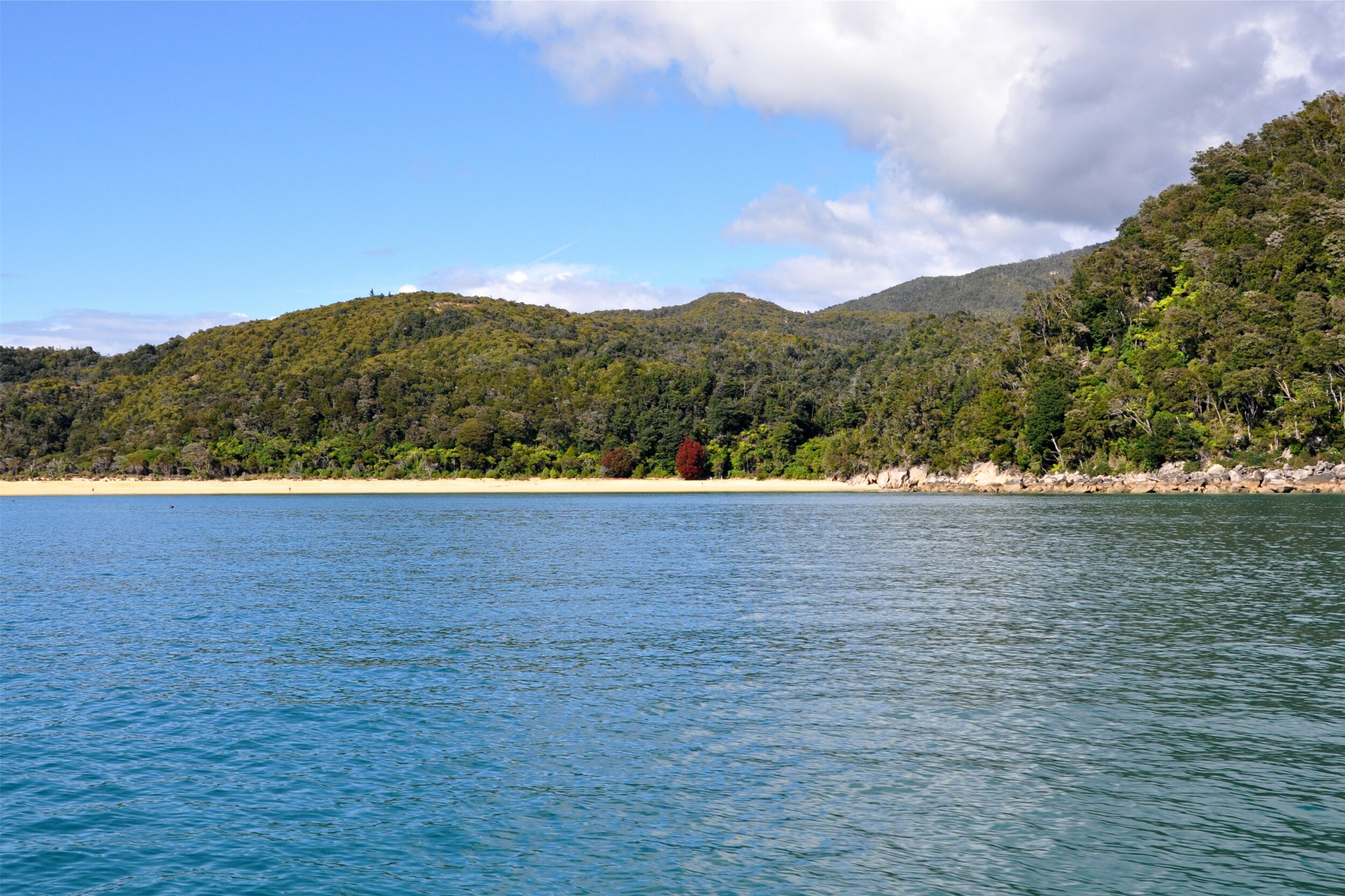
The journey north up to Totaranui took around two hours and followed the route that we would be walking. It was a nice chance to get our bearings and see the park from a different perspective.

As our water taxi was going the entire length of the park, we ended up calling in at several bays; dropping off passengers and redistributing bags and supplies for some of the guided trips that operate in the park.
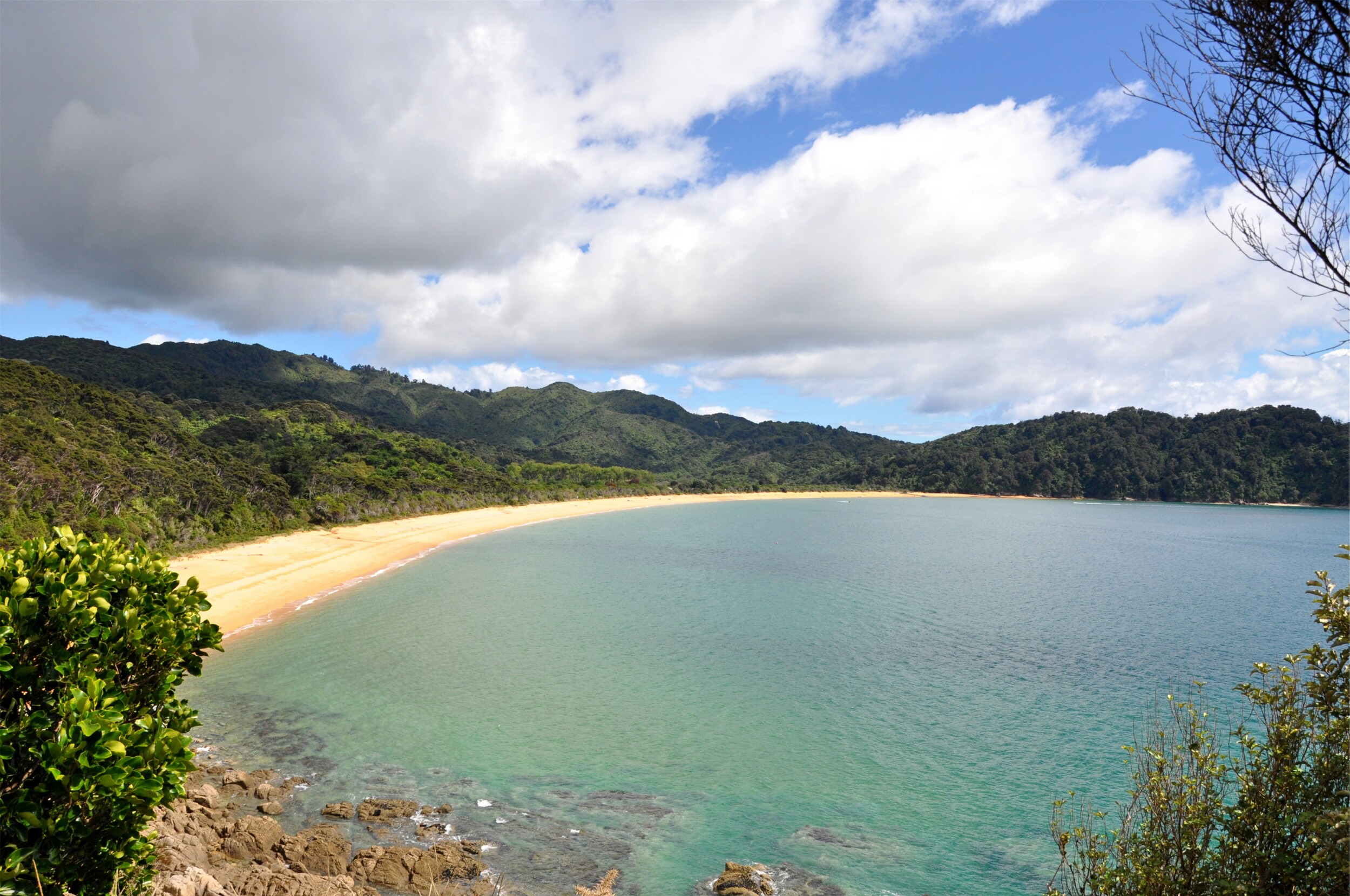
Eventually we arrived at Totaranui, where it was finally time to shoulder our big rucksacks and start hiking. Although it was tempting to linger on the beautiful golden sand of Totaranui Beach, we needed to make good time on the first section of the track as the next part of trail included a tidal crossing of an inlet.
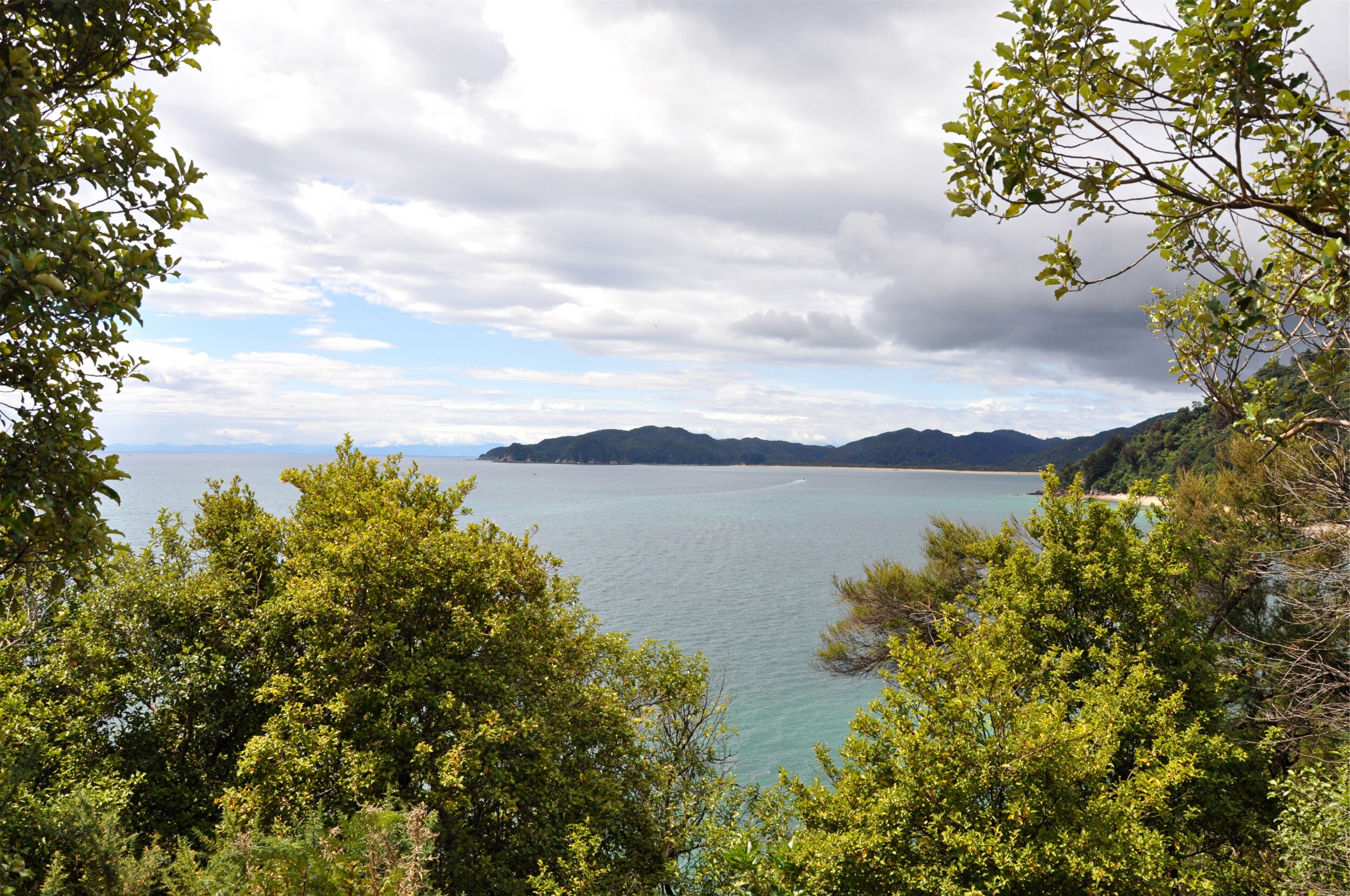
The first section of the track gave us a good taste of what to expect over the next couple of days, climbing over the headland at the end of Totaranui Beach before dropping back down to the next beach.

In places the track runs along the beach, which made for tricky walking with heavy rucksacks, especially when trying to keep as much sand as possible out of our hiking shoes. It did give us a chance to enjoy the beautiful turquoise water, which looked very tropical in the bright summer sunshine.

We made it to Awaroa Inlet in good time and were pleased to see the sandy mudflats stretching out before us. It didn’t take us long to make the crossing and we celebrated completing the only time-critical part of the hike with lunch at the picnic benches overlooking the inlet whilst watching other hikers pick their way across.
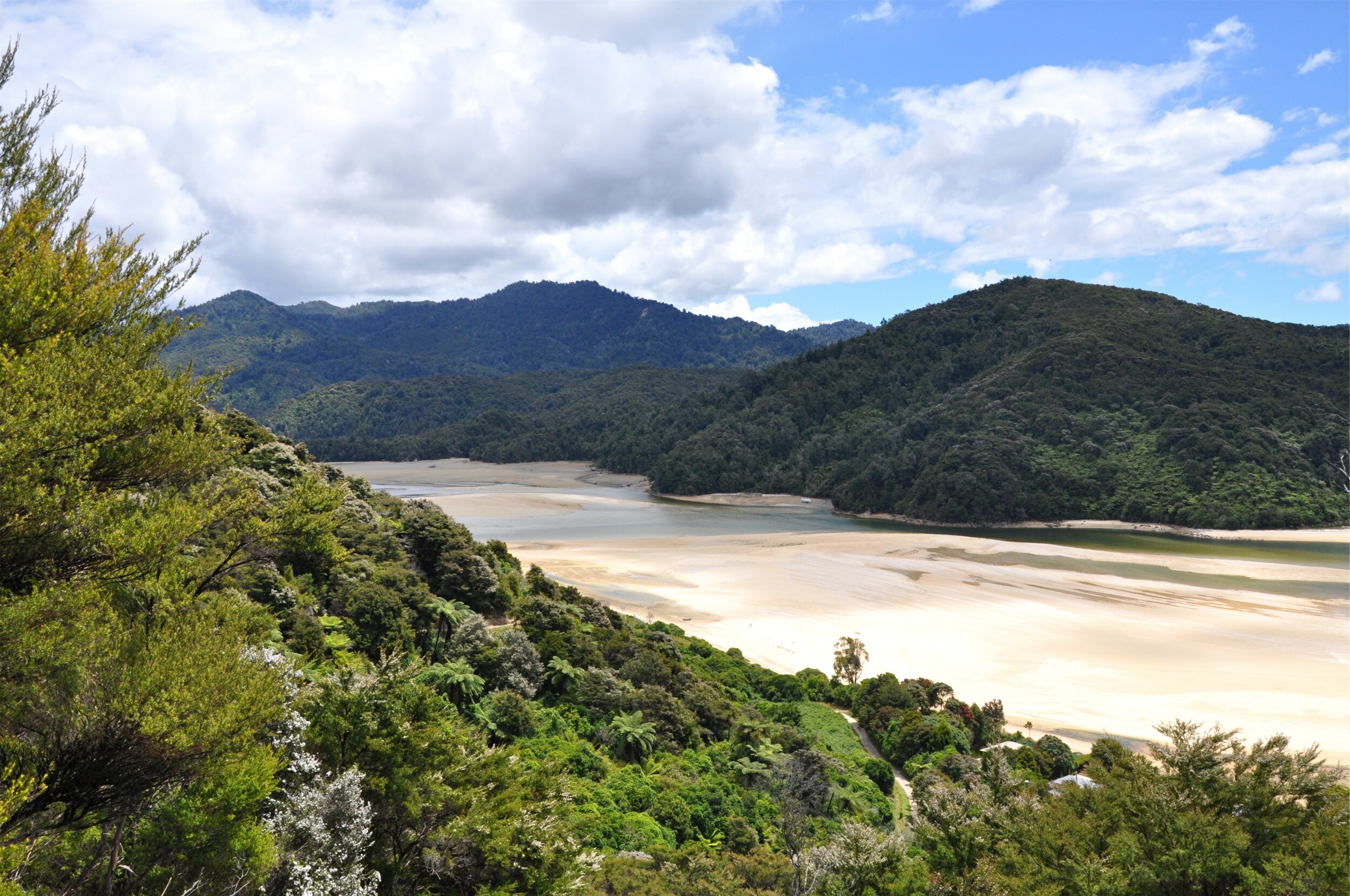
After lunch we started climbing up towards Tonga Saddle that would take us over the next headland. When we got to a break in the bush, we were able to look back down and see how quickly the inlet was filling with water. The next landmark was Awaroa Beach, which is well-known in New Zealand as it was recently purchased through a crowd-funding campaign.
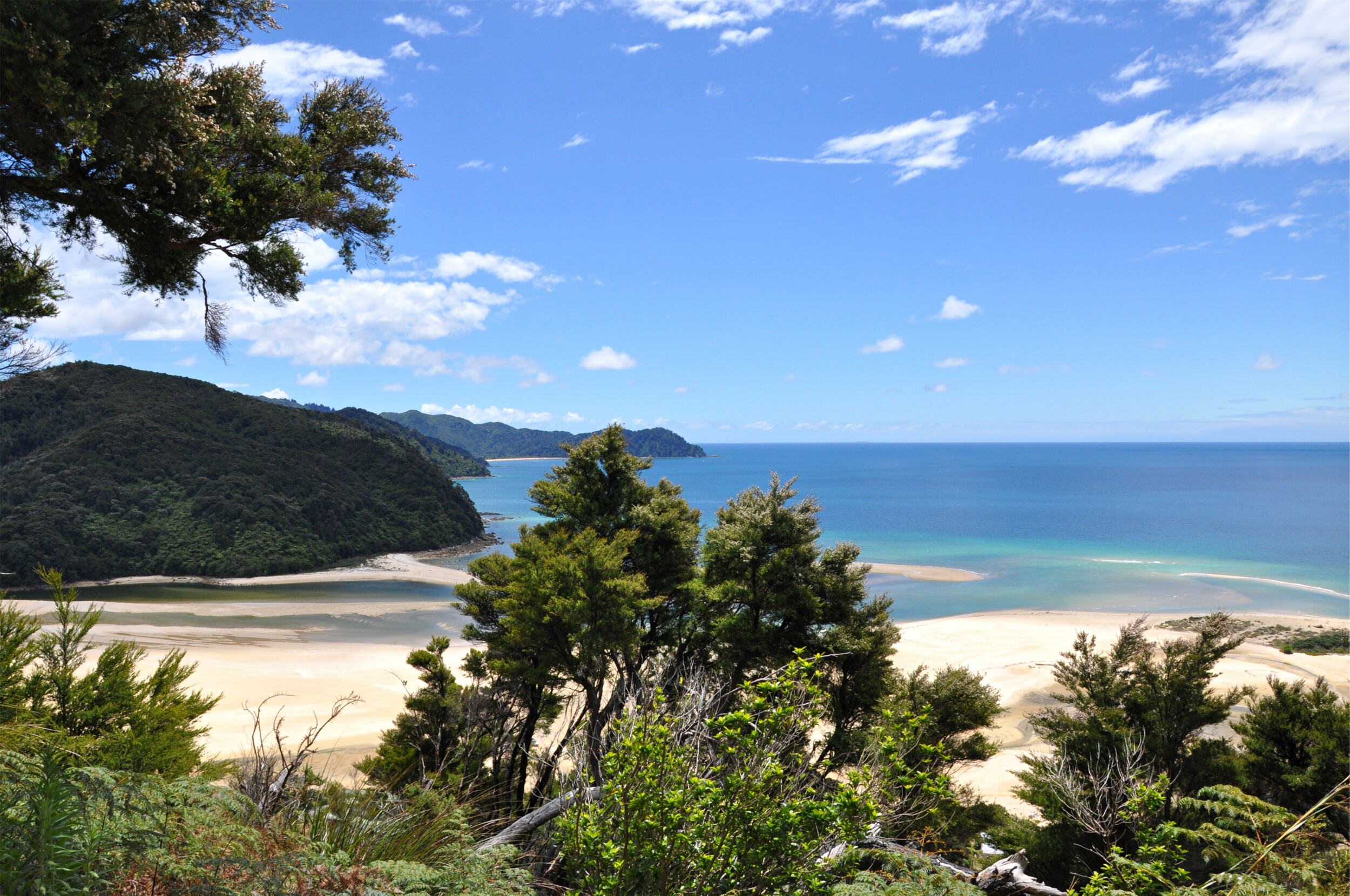
From Tonga Saddle we started descending through dense bush to the next beach. Onetahuti Beach was quite a contrast to the golden-white sands of Awaroa, with the sand here being much courser and a bright orange colour. We crossed the small stream on a series of bridges and boardwalks, stopping to admire some oyster catchers below us busily digging some kind of snack out of the sand.
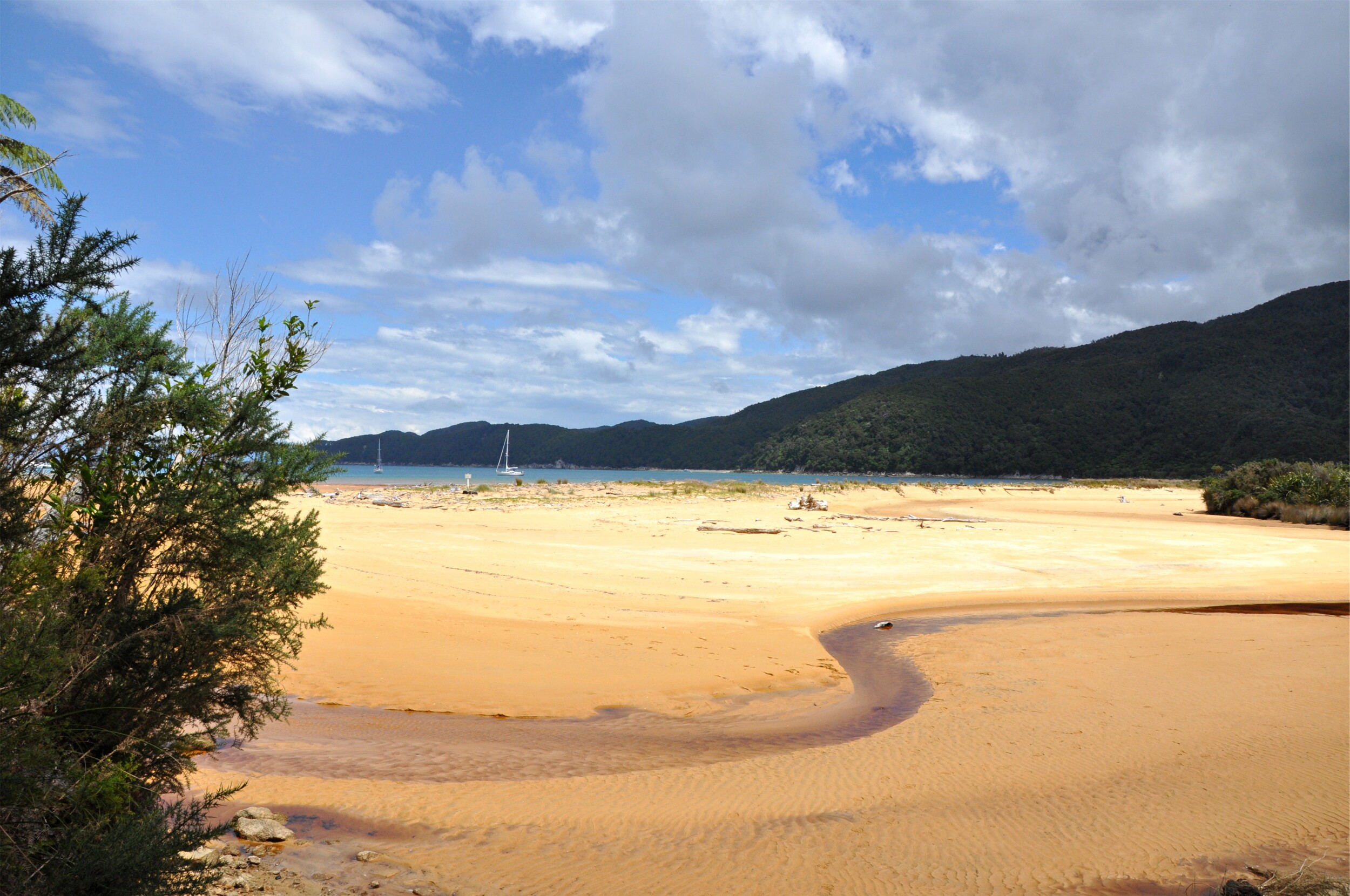
The track then followed the beach for the entire length of the bay, the colourful sand helped bring out the turquoise colour in the water.
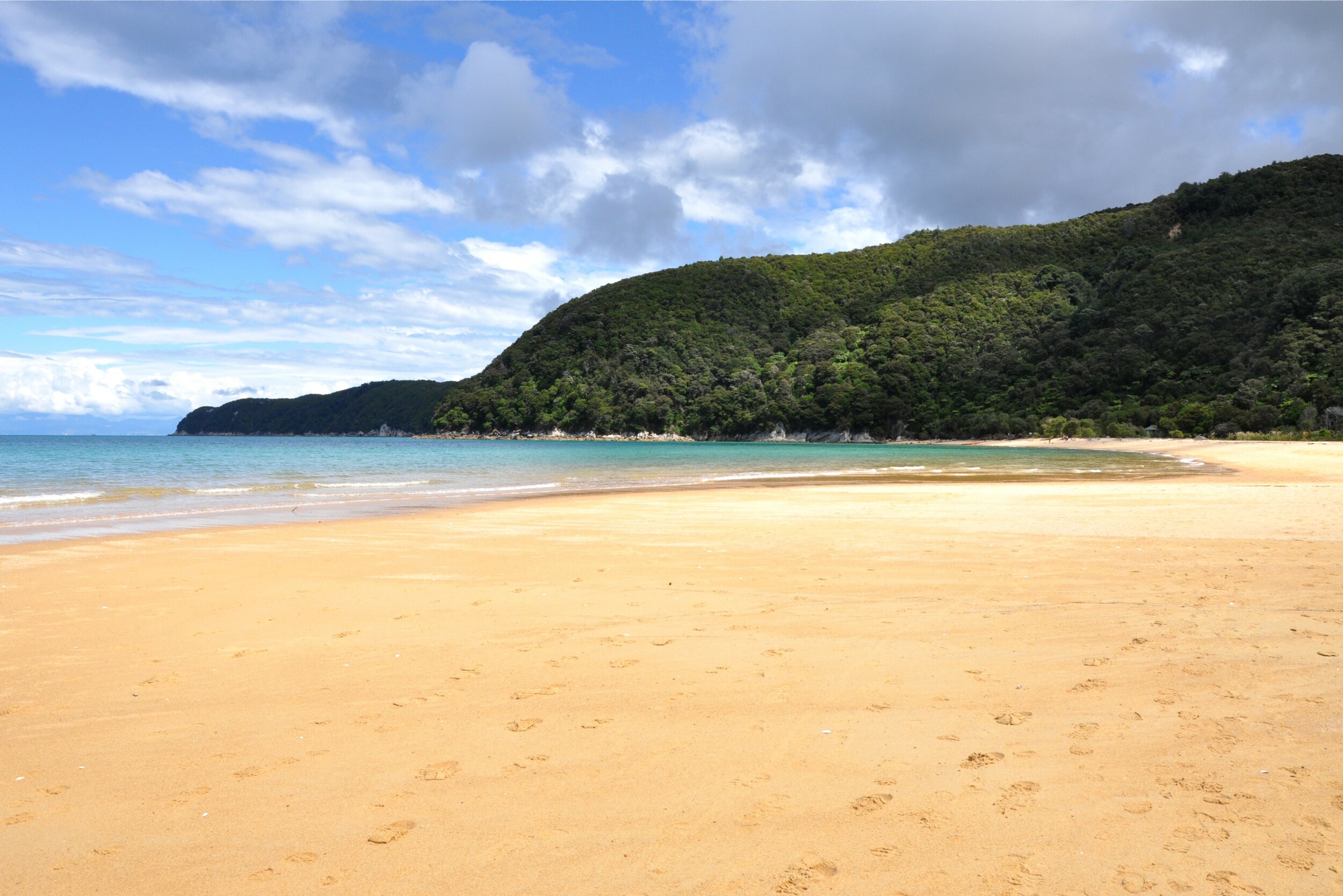
We stopped in the shade of the trees at the far end of the beach for afternoon tea. For entertainment we got to watch a water taxi load up several large sea kayaks, leaving the bay with them perched rather precariously perpendicular to the boat.

From Onetahuti Beach, we had one final climb to make before we reached our destination for the night. After a fairly gentle climb up we finally were able to see Bark Bay below us through a gap in the trees.

We dropped down into Bark Bay, and enjoyed the final flat section of track around the inlet to the hut.

After dropping our packs we spent a while exploring the area before grabbing a waterfront picnic bench where we could sit and enjoy dinner whilst watching the tide slowly come back in. A nice quiet end to a long day of boating and walking.
